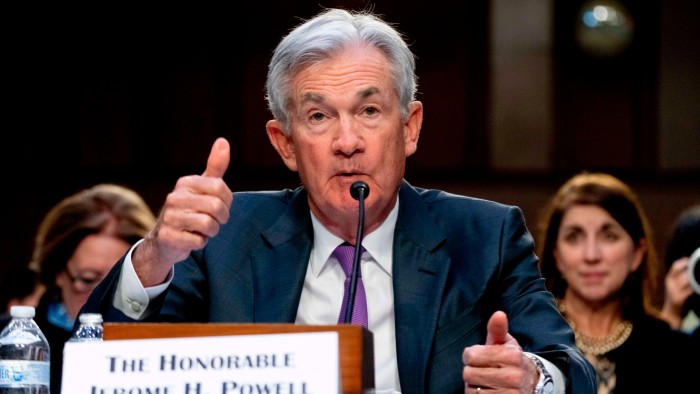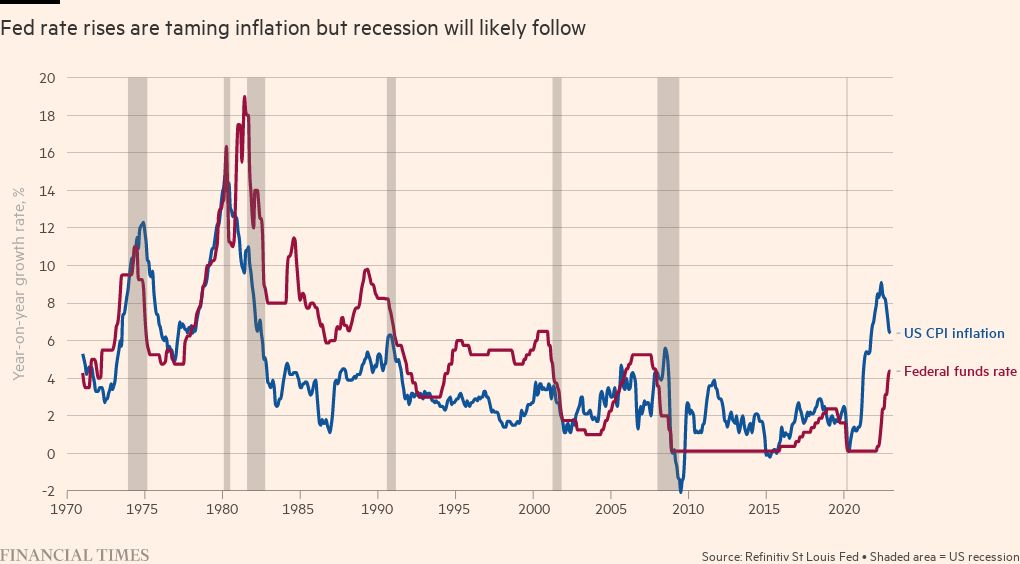Fed now on right track to price stability

Roula Khalaf, Editor of the FT, selects her favourite stories in this weekly newsletter.
The writer is the Alfred Lerner Professor of Banking and Financial Institutions at Columbia Business School and is a former governor of the Federal Reserve
In 2021-22, as a result of a flawed monetary policy framework, the Federal Reserve got way behind the curve in tightening monetary policy. The result was a surge of inflation to levels not experienced for 40 years.
Starting in March of 2022, the Fed made a dramatic turnround, and it has raised its benchmark rate by a total of 4.5 percentage points.
This current attempt by the Fed to manage a “disinflation” raises several important questions. Will the central bank be able to successfully return inflation to its 2 per cent target level in the near future? Will it have to tighten monetary policy substantially more than it already has, and how long should it keep interest rates high? How costly will it be for the Fed to attain its inflation objective? How should it balance the risk of recession against achieving its inflation objective?
In a paper I have written with Stephen Cecchetti, Michael Feroli, Peter Hooper and Kermit Schoenholtz, just presented at the US Monetary Policy Forum, looking at the historical record and economic modelling, we provide some answers to these questions.
The good news is that the prognosis for getting inflation on a path to return it to the Fed’s target level is now quite favourable. Despite its earlier mistakes, the central bank’s abandonment of gradualism and its aggressive tightening of monetary policy that started a year ago has been able to re-anchor longer-run inflation expectations at the 2 per cent level.
The bad news is that it is highly likely that achieving the Fed’s inflation target will lead to a recession. We have examined the historical evidence in the 16 large, policy-induced disinflations in a number of countries. In every instance, monetary tightening of the magnitude we are seeing in the US to bring inflation down has resulted in a surge in unemployment. In the current circumstances that already involve significant policy tightening and a prospect for further restraint, an “immaculate disinflation” would be unprecedented.
Our models suggest the Fed still has a way to go in tightening monetary policy. The federal funds rate will have to rise by about 1 percentage point from current levels to get inflation on a path back to 2 per cent, and the unemployment rate would be likely to rise from its current level by more than 1 percentage point. Our analysis suggests that the federal funds rate will need to remain above the 5 per cent level well into 2024.
Most importantly, the Fed needs to resist the temptation to ease monetary policy too early, as it has sometimes done in the past when it has been faced by a slowdown of the economy.
Premature pivoting would weaken the credibility of the Fed to control inflation, and would then require the central bank to raise interest rates to even more punishing levels to stabilise inflation.
This is the lesson from the disinflation from 1979 to 1983 under former Fed chair Paul Volcker. Starting in October 1979, the Fed raised the federal funds rate to 17 per cent in March 1980. In response to the resulting recession, it blinked and starting in April of 1980, lowered the rate by over 7 percentage points. The Fed’s credibility was weakened, with inflation expectations and inflation remaining stubbornly high.
To reestablish its credibility, the Fed then began to raise the federal funds rate to the crushing level of close to 20 per cent by the beginning of 1981, and kept it at high levels until the middle of 1982. Inflation expectations and the inflation rate started a steady decline to around the 3 per cent level in 1983. However, the unemployment rate rose to 10.8 per cent by 1982. The cost of this pivot was indeed very high.
Based on this analysis, in retrospect, we view the Fed’s failure to act preemptively in 2021 in the face of strong demand as a significant error.
However, we have been encouraged by the central bank’s aggressive policy actions over the past year and recent comments by chair Jay Powell, and other officials that it has more work to do to stabilise inflation. As recently as Tuesday, Powell told the Senate banking committee that if the “totality of the data” indicated that faster tightening was warranted, the Fed would be prepared to increase the pace of rate hikes.
Furthermore, Powell and officials have stressed that the possibility of a recession as a result of monetary tightening should not deter the Fed from doing whatever is needed to get inflation under control. Despite a rocky start, the central bank now seems on track to restore price stability.

Comments